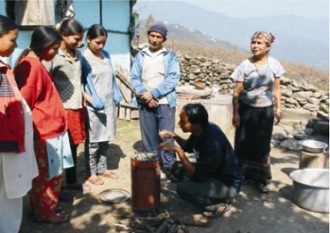Int J Environ Health Res. 2009 Jul 2:1-12.
Impact of improved cookstoves on indoor air pollution and adverse health effects among Honduran women.
Clark ML, Peel JL, Burch JB, Nelson TL, Robinson MM, Conway S, Bachand AM, Reynolds SJ.
Environmental & Radiological Health Sciences, Colorado State University, Fort Collins, USA.
Elevated indoor air pollution levels due to the burning of biomass in developing countries are well established. Few studies have quantitatively assessed air pollution levels of improved cookstoves and examined these measures in relation to health effects. We conducted a cross-sectional survey among 79 Honduran women
cooking with traditional or improved cookstoves. Carbon monoxide and fine particulate matter (PM(2.5)) levels were assessed via indoor and personal monitoring. Pulmonary function and respiratory symptoms were ascertained. Finger-stick blood spot samples were collected to measure C-reactive protein (CRP) concentrations. The use of improved stoves was associated with 63% lower levels of personal PM(2.5), 73% lower levels of indoor PM(2.5), and 87% lower levels of indoor carbon monoxide as compared to traditional stoves. Women using traditional stoves reported symptoms more frequently than those using improved stoves. There was no evidence of associations between cookstove type or air quality measures with lung function or CRP.



